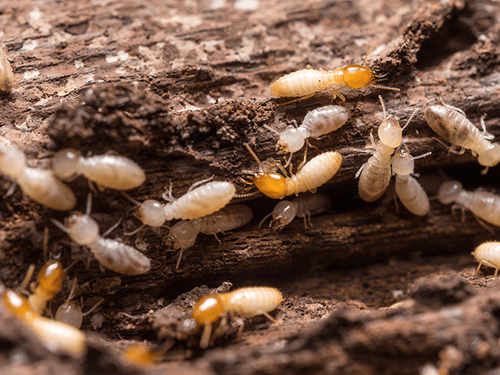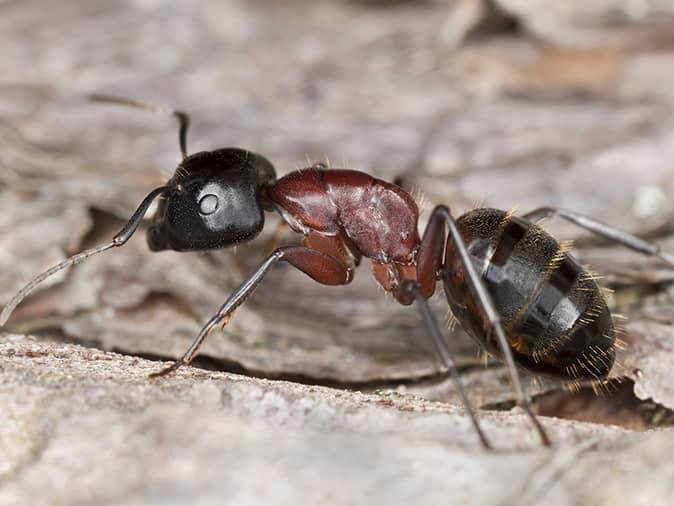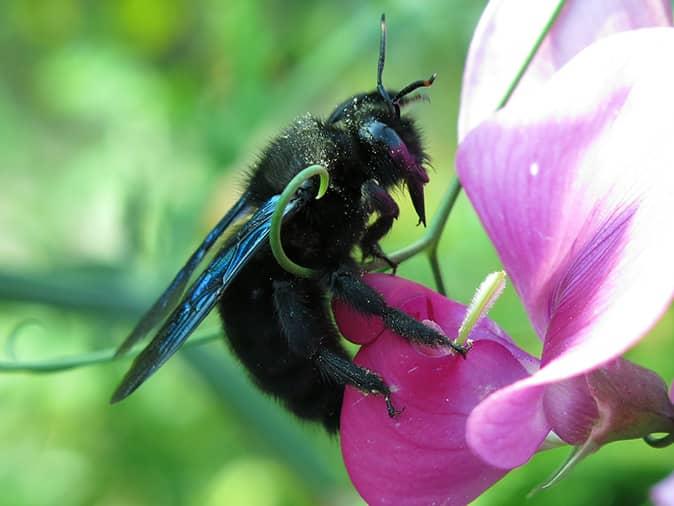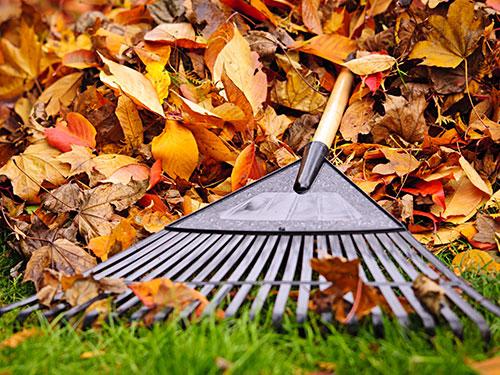Types Of Wood-Destroying Insects In New Jersey
Let’s face it, there are a lot of bugs in New Jersey but the ones that concern homeowners in Caldwell, Paramus, and across the state the most are wood-destroying insects. Unfortunately, the Garden State is home to more than one and in this blog post, our aim is to identify the most common types of wood-destroying insects in New Jersey and offer insight on how to protect against them.
What do termites look like?

In order to tell you what Eastern subterranean termites in New Jersey look like, we’ll need to explain their caste system. A termite colony is made up of three groups- workers, soldiers, and reproductives. Workers are soft, cream-colored insects that are about ¼ of an inch in length. They do not have wings.
Slightly larger than workers, termite soldiers are best identified by their yellowish colored heads and large strong jaws. They do not have wings either.
The reproductives of a termite colony, also called termite swarmers, are brown or black in color and range in size from ¼ to 1/ of an inch in length. They DO have wings.
Where you’ll find termites
Eastern subterranean termites, as their name suggests, live underground in colonies. Workers will leave their colonies and travel through earthen mud tubes in order to infest structures where they’ll consume wood behind the cover of walls and other areas not easily seen by unsuspecting homeowners.
Though termites are masters at avoiding detection, every year (late February through July, depending on rainfall and weather conditions) New Jersey homeowners have the chance to witness a termite swarm or several. This phenomenon occurs when the reproductive members of a termite colony emerge from their nests or from inside homes and other structures in order to find a mate and establish a new termite colony.
Why termites are considered wood-destroying insects
Not only are termites considered wood-destroying insects, they are the one of the biggest threats to homes and structures in New Jersey. That’s because these small insects attack and consume wood around the clock. The degree of damage they cause really depends on how long they’ve been active in a structure – in some cases the damage is minor and/or cosmetic. On the other hand, these silent destroyers can damage enough wood to cause major structural damage. As we mentioned in a previous blog post about termites, they are responsible for 6.8 million dollars in damage every year in the U.S.
Carpenter Ants
Carpenter ants are another common wood-destroying insect in New Jersey. While carpenter ants are not statistically as damaging as termites, these ants can still cause many problems for home and business owners.
What do carpenter ants look like?

Often described are large black ants, carpenter ants vary in color - sometimes red, sometimes black, sometimes a yellowish hue, and sometimes a combination of all the colors. Ranging in size from 5/8th to ½ inch in length, they are much larger than odorous house ants, pavement ants, and other types of ants in New Jersey.
Where you’ll find carpenter ants
Carpenter ants nest in wood that is moist or in the process of decaying. Common nesting sites include tree stumps, utility poles, porch posts, siding, door and window frames, wall voids, wood in contact with soil, and floor joists.
Why carpenter ants are considered wood-destroying insects
Though not nearly as economically important as termites, carpenter ants do cause damage when they tunnel in wood. According to Rutgers, carpenter ant damage rarely compromises the structural integrity of a building but we’d be remiss if we did not mention the extent of damage they cause depends on how many nests are present in a structure and how long carpenter ants have been active.
Carpenter bees
Unlike other stinging insects, the carpenter bee will burrow it's nest into wood and other hard plant materials. The damage they cause to structures is apparent by the circular holes they drill to create tunnels inside wood.
What do carpenter bees look like?

Carpenter bees in New Jersey are often mistaken for bumblebees and while these fuzzy-haired stinging insects are similar in size and coloring, there are a couple of distinctions to note. First, bumblebees have fuzzy abdomens with yellow and black markings. Though the rest of their bodies are covered in yellow hairs, carpenter bees have shiny black, hairless abdomens. Secondly, you won’t find a group of carpenter bees buzzing about. Unlike bumblebees who live in social colonies, carpenter bees are solitary insects that build nests for one.
Where you’ll find carpenter bees
Carpenter bees use their strong mandibles to bore holes into weathered, unpainted, or soft wood in order to create sites in which to lay their eggs and rear young.
House siding, eaves, rafters, decks, fascia boards, and frames are common nesting sites for industrious carpenter bees. If you see perfectly round hole(s) drilled into any of the places just mentioned, there’s a good chance you have a carpenter bee (or several) on your property, especially if that wood is not painted or pressure-treated.
Why carpenter bees are considered wood-destroying insects
Carpenter bees often return to the same nest year after year which, unfortunately, can cause moisture issues, rot, and decay. Though not nearly as destructive as other wood-destroying insects, carpenter bees can cause both cosmetic and structural damage.
In addition to the damage these bees directly cause, there’s also the damage that is inflicted when woodpeckers start pecking away in carpenter bee holes in order to get to the carpenter bee larvae they love to feed on. Because they don’t stop until they can't detect any more larvae, holes that were about a little finger in diameter will be larger when woodpeckers finally move. Of course, this leads to the unsightly holes and an increased risk of moisture, rot, and decay.
What to do if you find wood-destroying insects on your property
If you’ve found a tree crawling with carpenter ants, noticed a hole drilled into your deck, or have watched winged insects emerge from your walls or noticed a swarm outside, contact Arrow Pest Control.
Our locally owned and family-operated NJ pest control company has been exterminating carpenter ants, carpenter bees, and termites since 1973 and are ready to help you eliminate the threat these wood-destroying insects pose to your home. In addition to our stand-alone termite control, carpenter ant control, and stinging insect control, we also offer a year-round home pest control plan that targets all three PLUS a whole host of house-infesting pests. Check out our Arrow Premier program below or give us a call to discuss your pest pressures. Serving our neighbors for close to 50 years, our team of pest control specialists are ready to help you get rid of whatever’s bugging you!
Our Wood-Destroying Insect Solutions

Testimonials
Request Your FREE Estimate
Additional Services
Our solutions are designed for even your toughest pest problems.
Don’t let pests affect your quality of life, here's how we can help:



